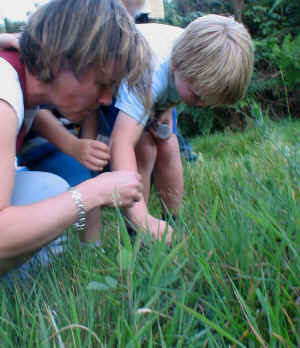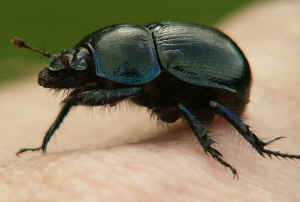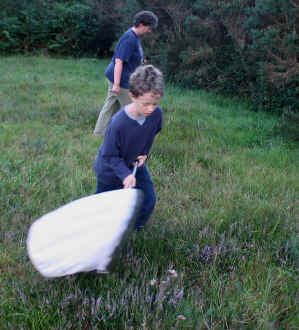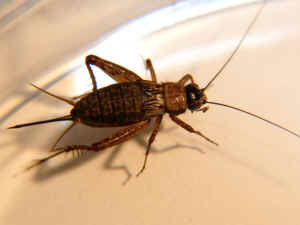The Young Rangers' Club
A Club for Children interested in Wildlife & Conservation
Nature Detectives
1st September 04 - continued
previous
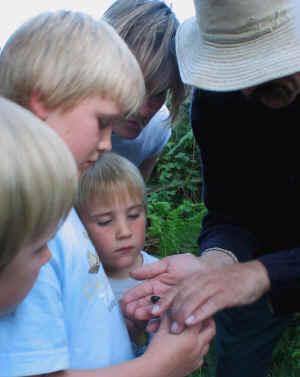
| The Heathland Project
area at the Centre is being restored to a heathland habitat. It is divided into strips and
managed in different ways to see which method best encourages heathland plants such as
heather, to grow. The strips are now all very different from each other. We went to help find some of the animals which live on the heathland. Some of the animals living there only come out at night, or they may be very secretive, even if they are out in the day. As we were unlikely to see such animals at this time, we looked for signs of their presence. First of all, we looked at fallen hazelnuts from a Hazel tree which overhangs the entrance to the heathland. Most of the hazelnuts were empty and had been eaten by squirrels. We knew this because they were all irregularly crunched and munched. However, we did find one that looked as if it had been eaten by a Dormouse. Dormice eat hazelnuts in a very characteristic way. They are one of Britain's most endangered mammals. They are known to live at the Woodland Education Centre, although signs of them had not been found in this area before.
|
